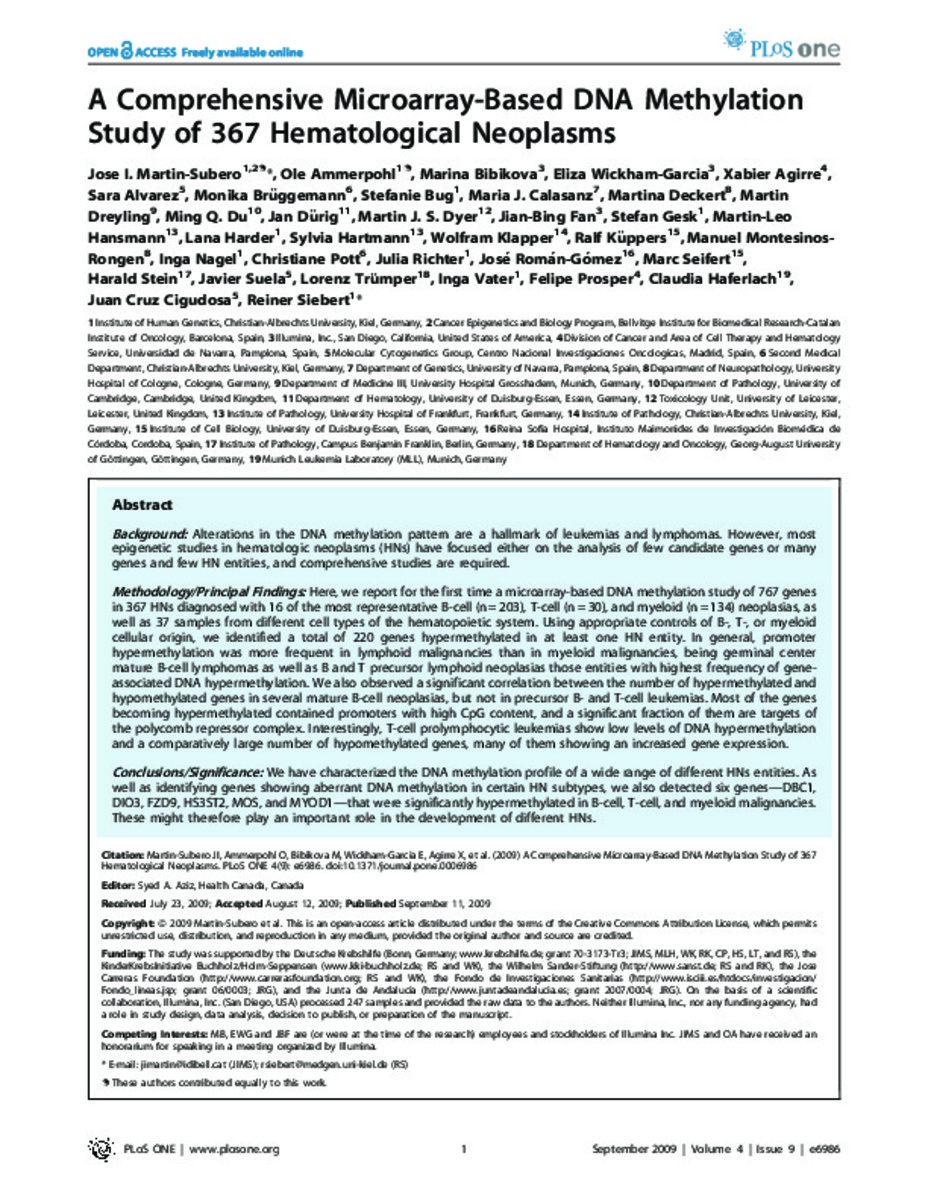A Comprehensive Microarray-Based DNA Methylation Study of 367 Hematological Neoplasms
Palabras clave :
Materias Investigacion::Ciencias de la Salud::Oncología
Fecha de publicación :
2009
Editorial :
Public Library of Science
Cita:
Martin-Subero, J., Ammerpoh, O., Bibikova, M., Wickham-Garcia, E. et al. A Comprehensive Microarray-Based DNA Methylation Study of 367 Hematological Neoplasms.PLoS ONE (2009); 4 (9)
Aparece en las colecciones:
Estadísticas e impacto
0 citas en

0 citas en

Los ítems de Dadun están protegidos por copyright, con todos los derechos reservados, a menos que se indique lo contrario.









